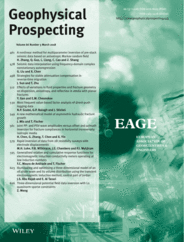
Full text loading...
The quantitative explanation of the potential field data of three‐dimensional geological structures remains one of the most challenging issues in modern geophysical inversion. Obtaining a stable solution that can simultaneously resolve complicated geological structures is a critical inverse problem in the geophysics field. I have developed a new method for determining a three‐dimensional petrophysical property distribution, which produces a corresponding potential field anomaly. In contrast with the tradition inverse algorithm, my inversion method proposes a new model norm, which incorporates two important weighting functions. One is the L0 quasi norm (enforcing sparse constraints), and the other is depth‐weighting that counteracts the influence of source depth on the resulting potential field data of the solution. Sparseness constraints are imposed by using the L0 quasinorm on model parameters. To solve the representation problem, an L0 quasinorm minimisation model with different smooth approximations is proposed. Hence, the data space (N) method, which is much smaller than model space (M), combined with the gradient‐projected method, and the model space, combined with the modified Newton method for L0 quasinorm sparse constraints, leads to a computationally efficient method by using an N × N system versus an M × M one because N ≪ M. Tests on synthetic data and real datasets demonstrate the stability and validity of the L0 quasinorm spare norms inversion method. With the aim of obtaining the blocky results, the inversion method with the L0 quasinorm sparse constraints method performs better than the traditional L2 norm (standard Tikhonov regularisation). It can obtain the focus and sparse results easily. Then, the Bouguer anomaly survey data of the salt dome, offshore Louisiana, is considered as a real case study. The real inversion result shows that the inclusion the L0 quasinorm sparse constraints leads to a simpler and better resolved solution, and the density distribution is obtained in this area to reveal its geological structure. These results confirm the validity of the L0 quasinorm sparse constraints method and indicate its application for other potential field data inversions and the exploration of geological structures.

Article metrics loading...

Full text loading...
References


Data & Media loading...

